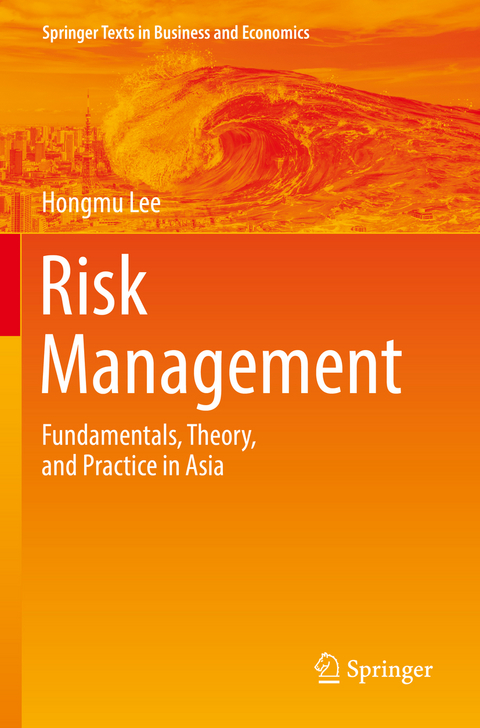
Risk Management
Springer Verlag, Singapore
978-981-16-3470-3 (ISBN)
Until now, risk management (RM) theory has been discussed while the framework of the theory has remained unclear. However, this book, unlike previous books of this type, provides risk management theory after presenting a framework for it.
Enterprise risk management (ERM) is seen differently depending on one’s position. For accountants, it is a means for internal control to prevent accounting fraud, whereas for financial institutions, it quantifies the risk that administrators can take to meet supervisory standards. Therefore, most of the ERM outlines are written to suit the intended uses or topics, with no systematic RM overviews. This book discusses a systematic RM theory linked to the framework of it, unlike previous books that were written according to topic.
After the Enron scandal in December 2001 and WorldCom accounting fraud in June 2002, several laws were enacted or revised throughout the world, such as the SOX Act(Sarbanes-Oxley Act) in the United States and the Financial Instruments and Exchange Law and Companies Act in Japan. In this process, the COSO(Committee of Sponsoring Organizations of Treadway Commission) published their ERM framework, while the ISO (International Organization for Standardization) published their RM framework. The author believes that the competition between these frameworks was an opportunity to systematize RM theory and greatly develop it as an independent discipline from insurance.
On the other hand, the Great East Japan Earthquake that occurred on March 11, 2011, caused enormous losses. Also, because pandemics and cyber risks are increasing, businesses must have a comprehensive and systematic ERM for these risks associated with their business activities
Hongmu Lee is a professor of risk management and insurance at Waseda University, Tokyo, where he received his Ph.D. He is also the president of the Insurance and Risk Management Institute of Waseda University. The institute aims to carry out research internationally in cooperation with industry and the academic world on insurance and risk management. He has authored several books and articles in academic and professional journals, mainly in Korea and Japan.
Part 1The general theory of risk management.- 1 The concept of risk and corporate risk.- 2 Enterprise risk management and related fields.- 3 Accounting fraud and internal control.- 4 COSO ERM framework.- 5 ISO RM framework.- 6 Risk assessment.- 7 Value at risk.- Part 2 Risk Financing.- 8 Risk treatment and ART.- 9 Limitations of insurance as a risk financing tool.- 10 Captive insurers and finite insurance.- 11 Contingent capital.- 12 Securitization and insurance-linked securities.- 13 Insurance-linked security types.- 14 Derivatives and insurance derivatives.- 15 Weather derivatives trading.- 16 Risk management in China.- 17 Risk management in South Korea.
| Erscheinungsdatum | 30.11.2022 |
|---|---|
| Reihe/Serie | Springer Texts in Business and Economics |
| Zusatzinfo | 82 Illustrations, color; 20 Illustrations, black and white; XXIV, 248 p. 102 illus., 82 illus. in color. |
| Verlagsort | Singapore |
| Sprache | englisch |
| Original-Titel | リスク・マネジメント論 |
| Maße | 155 x 235 mm |
| Themenwelt | Wirtschaft ► Betriebswirtschaft / Management ► Allgemeines / Lexika |
| Wirtschaft ► Betriebswirtschaft / Management ► Unternehmensführung / Management | |
| Schlagworte | Alternative Risk Transfer • COSO-ERM framework • Enterprise Risk Management (ERM) • ISO RM Framework • risk assessment • risk financing |
| ISBN-10 | 981-16-3470-X / 981163470X |
| ISBN-13 | 978-981-16-3470-3 / 9789811634703 |
| Zustand | Neuware |
| Haben Sie eine Frage zum Produkt? |
aus dem Bereich


